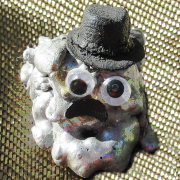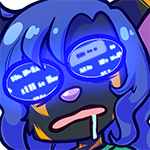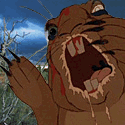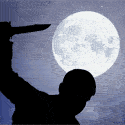|
Before writing anything else, I wish to state the following: I only got into bird photography around 3 months ago (though photography has been in my blood for 15 years by now), and while I feel I have acquired some knowledge worth sharing, take that into account when reading the following. If you disagree with anything I say, feel free to post something to that accord. What I do NOT want this thread to turn into is some big argument/dickwaving over what gear is best yada yada. Nor do I want "proof" that my lens recommendation is wrong because you managed to get a killer bird shot with a 50mm on a Leica rangefinder. This is for all of us to share knowledge. So let's kick it off. 400/5.6, 50D 1. Gear One of the most frequently asked questions is what type of gear you really need to get into birding. While it's certainly possible--and has been done--to get killer wildlife shots with anything from a 300D with a kit lens to a 1D III with a 1200mm f/5.6 (currently selling used for a cool $120,000 at B&H), there's a range of gear that is fairly well suited for this type of photography and won't necessarily require you to mortgage the house or eat Ramen until retirement. 1a. The body I highly prefer a decent crop sensor body. Why? Well, it's a good way to get a high pixel density, and when cropping (which you will have to) pixel density is king. Let's say you are shooting at 400mm with a 20D (cheap old body) and the same on a 1Ds Mark III. Let's also say the subject is so small it doesn't fill the frame on the 20D (you will find this to be the case far too often!). Once you cut down the (significantly larger field of view) 1Ds Mark III image to the same crop as the 20D you have... the same number of pixels. Because of the infamous "crop factor", a full frame camera would need 2.56x as many pixels to get the same pixel density as a 1.6x crop camera. Sure, you can throw a 600/4 on the 1Ds III to make up for it, but then again you could throw the same lens on the 20D and well, you get the idea. Not saying that FF doesn't have its significant advantages, but there's a good argument for sticking with crop here. To match the pixel density of my 50D I would need something like a 39 megapixel full frame camera. You also want a body that has good autofocus performance. Luckily, most recent DSLR bodies do. While I have much love for Pentax, this is one area where I feel they fall short (and I have owned a K20D), so could not really recommend them here. If you already have one, by all means, use it, but it wouldn't be my choice of weapon for fast moving subjects. The rest, well, high ISO performance is good when you are shooting slow-ish lenses in so-so light. But any half decent semi recent crop body should suffice for making good shots. I've gotten a lot of nice flight shots with a 20D that cost me something like $250. 1b. The lens Here's where you can't just pick up any old thing and go to town. Sure, people have gotten some killer shots from a 70-200/4 or even shorter, but those are exceptions. You are looking for three things here: length, speed, and autofocus performance. The below is highly Canon-specific; please contribute with your thoughts and experiences in other mounts/brands. Length, I would recommend no less than 400mm. Some people have gotten decent results with 300mm lenses but that's pushing it a bit. Excluding the zooms, things get pretty loving expensive past 400mm. Speed, well, I shoot mainly a f/5.6 lens. Price becomes a real issue here; Canon's 400/5.6 can be had for $900 or so used while you're looking at several times that to get the 400/4 which buys you a single stop of speed. Autofocus performance. You are looking for two things here in my opinion: speed, and the ability to engage a focus limiter. The former is self explanatory, the latter means that you can tell the lens not to attempt to focus closer than X meter/feet. This helps tremendously when you are shooting subjects against low contrast backgrounds (e.g. blue sky) where the lens might "hunt" significantly when losing the target. Believe me, it's not fun waiting for a Sigma 50-500 to rack in and out. Your bird will be long gone by the time it's done. So what lenses are worth looking at? Well, I am coming from a very Canon centric view point, so will focus (hurr) on that. The Sigma "Bigma" 50-500 is a very nice piece of glass for the money. The focusing is fast, and if you stop it down just a tad (f/8 at 500) it gets quite sharp. It is big, heavy, lacks a focus limiter, and the twist-zoom mechanism is a little unwieldy, but it's a hell of a lot of glass and reach. I had one, and sold it for... the Canon 400/5.6. And I tell you, this is one amazing lens. Tack sharp wide open, and the autofocus is insanely fast. The thing just zips everywhere. It also has a focus limiter switch. What it does NOT have is IS, which the Canon 100-400 does. The 100-400 zooms (which can be handy), has IS, but it is not quite as sharp and not nearly as fast autofocusing as the 400/5.6. Still, a lot of people use it successfully even for flight shots. One other lens I have not used but have heard a lot of positive things about is the (I believe discontinued) Sigma 400/5.6. Please note that Sigma quality control is a little spotty, so it's best to try out a particular lens before buying it, or buy from a place with a good return policy (e.g. KEH or Adorama). Should you want a longer prime than 400, or better performance than the zooms, you have to fork out a lot of money. I looked at the cost of a 500mm for my 1Ds II vs the cost of a 50D, and decided I'd rather get a 50D to use with my 400. Weight does become an issue when you shoot hand held a lot, so bigger isn't always better. 1c. The thing that you put under things that go on top of other things (tripod and head) I really don't have much to say here since I shoot handheld 99% of the time. For long teles you want a gimbal style mount where the lens/camera is balanced and doesn't attempt to tip over in any direction. The Bogen 393 is the cheapest option by far at around $180. A serious Wimberley type setup will cost you several times that. This does not include the tripod legs. You do not want ball heads for any longer/heavier gear. Bad, bad, bad. 1d. Summary Get a crop body and the best/longest lens you can afford. My budget suggestion would be a 20D + Sigma 50-500 which you can get for < $1k these days. My slightly nicer setup would be a 50D with either 400/5.6 or 100-400. I don't know enough about non-Canon gear to make any good suggestions here, sorry! 2. Technique.  400/5.6, 50D 2a. Things that move. This is the crown jewel if you ask me. Birds in flight are a huge challenge for photographers, and a ton of fun to shoot. The key here is shutter speed. To really capture a nice, crisp shot of a flying bird, you want to be at no less than 1/1250 second. I in fact prefer 1/1600 or above. Panning at slower speeds seems like a good idea, but those types of shots generally don't come out all that well. Push the ISO as high as you need; you are far better off with a sharp ISO 3200 shot than a blurred to hell ISO 800 shot. Birds in flight are generally a bitch to meter. Your camera will be confused to hell and back between white bird / blue sky, black bird / white sky, purple bird / green foliage etc etc. If you are shooting in fairly consistent light, do yourself a favor and stick to manual mode. Meter off something average in manual mode, snap a few test shots, and tweak the shutter speed / aperture / ISO as needed to keep things in line. I do 90% of my shooting in manual mode, and only revert to aperture priority when the light is constantly changing. Exposing to the right is tempting, but it just takes a small change of light or in the reflection off a bird's feathers to gently caress that approach up, so try and keep the exposure ball park in the middle. Tracking. Your camera likely has some sort of tracking mode (called Servo on Canon) where it attempts to track the subject continuously. You will want to use this. I prefer to use the center focusing point since I don't like to rely on the camera to make decisions for me. Exceptions are when the birds might change direction very quickly, and then it may be advisable to engage all AF points and hope the camera figures things out right. When using the center point try to keep the head/eyes under it -- you might not end up with the ideal composition/framing, but can crop later. Most bird shots seem to lack something if you don't get the eye sharp. Get that part right and the rest mostly sorts itself out. When starting out, I recommend starting to track the bird in your viewfinder even when it's WAY far way. Once it gets close things start moving really fast and you might be waving your lens all over the place trying to find that drat tern only to find it zipping past you before you do. After a while you get pretty good at aiming the lens properly and can center a bird in the viewfinder with little effort. But do practice; with a longer lens you are viewing a very small portion of the sky and you need to get it right! If your camera allows for it, my personal preference is to move the auto focus function to a button separate from the shutter. Not saying you can't leave things as they are, but I've found it to work better for my shooting. I generally leave my cameras in Servo (tracking/continuous mode) and if I want to focus/recompose for some reason I just tap the rear button to focus, then I can recompose and fiddle with things without the shutter button screwing it up. Getting the right angle/light will be covered in the next post.  400/5.6, 20D 2b. Things that don't move much. Might not seem as exciting, but shooting birds NOT flying can be fun and challenging too. Here you can choose whatever autofocus mode you are comfortable with; I still use my cameras in Servo mode but there's really no reason you can't use single shot. The main thing here--other than getting close enough, to be covered in the next part--is getting a nice, sharp shot. Seems easy enough, but when the bird is shoved up in a tree in shadow and all you have is a long f/5.6 lens, well, things get hairy. What I have found to be useful when shooting long glass hand held is to a) push the camera against your face (to sort of anchor it), b) hold the lens with your left hand near the end/hood, and c) fire bursts if your equipment allows for it. The last point I've found particularly useful; if you do your best and fire off a handful of frames chances are you manage to be fairly still and unmoving in one of them. I can often get nice results at 1/160 to 1/200 with a 400mm lens this way, with no image stabilization available. Exposure, here you can use Av mode (my preference) with the appropriate exposure compensation (EC). I wish I had a recipe to give you for when to use EC and how much, but it comes down to experience. Remember that your camera generally tries to make things "average" for you so if your subject is unusually bright or unusually dark things get thrown off a bit. Play with EC on something like a white foam cooler or dark rock or whatnot filling anything from small part to almost all of the frame to get a feel for what your particular camera "thinks" and you will get a pretty good idea of what to use and when. And again, don't fret over noise and use a higher ISO when you need to. Noise Ninja and Neat Image can mostly fix noise issues, but they won't do much about an image blurred due to too slow a shutter speed. ----------------------------------------------- OK, I am done with part 1 (the mechanics). Part 2+ will focus on how you go about figuring out where, when and how to shoot, how to deal with not being able to control the light, and how to post process your shots to get nice results. I hope this helps someone out; if only one person learns a little then it's all worth it! Any questions, thoughts, constructive criticism on what I have posted so far are most welcome. I hope this turns out to be a thread where we can all learn, share and become better photographers.
|
|
|
|

|
| # ? Apr 25, 2024 08:27 |
|
I have really enjoyed all of your bird shots. I only just got my DLSR, and my longest lens is my 55-250. I've been shooting a lot of pelicans since they are out eating just off the coast every day, and good practice. This is probably the best shot technically I've gotten of one, but I know I can do better.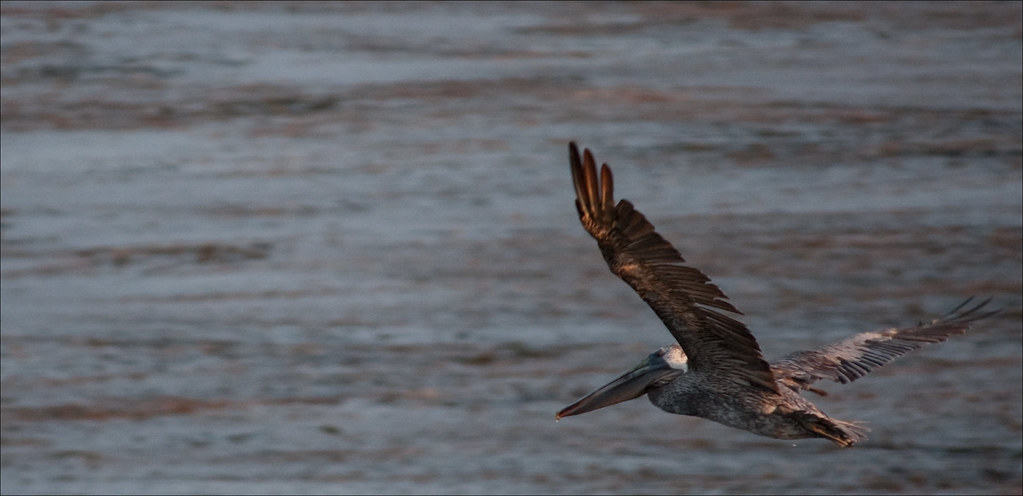 How do you track birds successfully? I've been watching them with both eyes open, so I can see if any of the other birds wheeling in the air are doing anything interesting, but it definitely feels hard to focus on so many things at once.
|
|
|
|
Great thread! Extremely informative. Here's a question for you: Shooting large birds is one thing, but how do you go about shooting smaller ones? I visited the local wildlife refuge last summer early one morning and the longest lens I had with me was the 70-200mm. I couldn't really track these birds at all. For one, they were tiny and 200mm wasn't long enough to reach them. But second, they were very fast, zipping all over the place, eating mosquitos. They were beautiful birds and I was really sad I couldn't photograph them better. I also found that the 70-200mm limited me in how close I could get to them when they were resting. They would fly away if I got less than 10-15 feet. What is the secret here? Would you just have to position yourself at a distance and track them very carefully/patiently? This is what the birds looked like "up close" with 200mm: 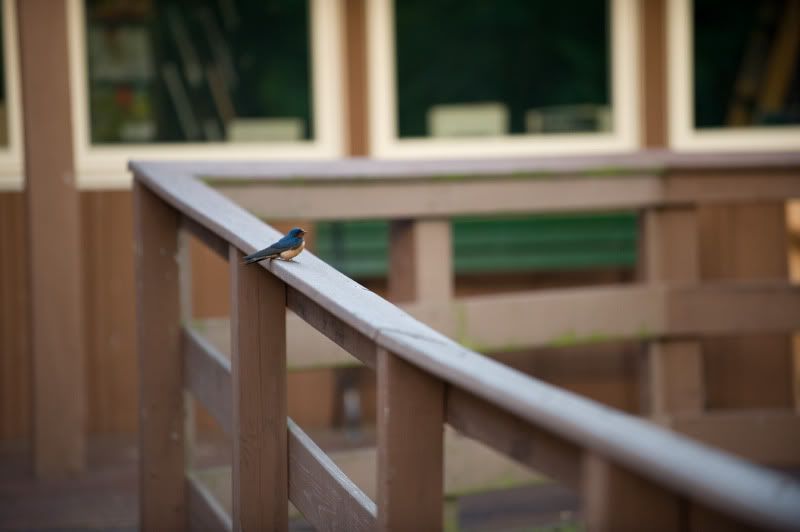 In flight: 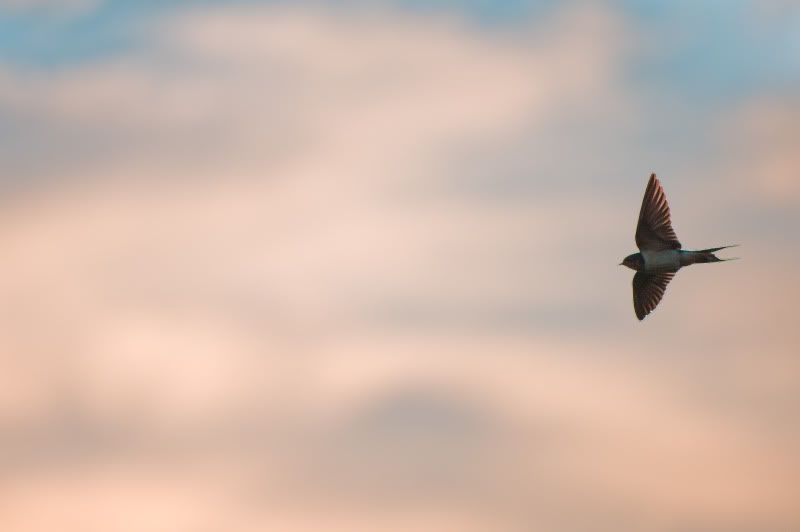
|
|
|
|
Jadeilyn posted:I have really enjoyed all of your bird shots. I only just got my DLSR, and my longest lens is my 55-250. I've been shooting a lot of pelicans since they are out eating just off the coast every day, and good practice. This is probably the best shot technically I've gotten of one, but I know I can do better. That is a pretty darn nice pelican. I've found that often the lower contrast (dull/dark colored) birds can present a bit of a challenge for the camera's AF system and things don't really get nicely in focus. This looks good though! As for tracking, well, you made me think about it. Initially I paid attention to only one bird at a time, but these days (I shoot at least once a day for the past couple of months so starting to get into the "groove") I generally pop open my left eye (right is at the viewfinder) frequently to eyeball the surrounding area for what else might be going on. Occasionally I'll just look away from the camera entirely to scan the sky behind/around in case something shows up. Once you get good at acquiring your subject in the viewfinder with a long lens you can afford to not track it for a few seconds while checking out what else is going on. For instance, last night I was out on the beach, and shooting some terns fishing. I check behind me and see--pretty far away--a stream of pelicans heading my way. I go back to the terns but have a general idea of how long it'll be before the pelicans get close enough to be interesting. Things like that, you just start picking up after a while. Mannequin posted:Great thread! Extremely informative. Here's a question for you: Well, a few points here. First, trying to shoot small birds (or most birds for that matter) with a 70-200 is going to be painful. You have to both get close AND crop heavily. That said, there are a couple of things you can do to capture small birds more easily. First, put up a feeder somewhere. Second, place yourself near it, wearing something that mostly blends in (you're not trying to camouflage yourself, just avoiding being bright and obvious). Keep doing this as often as you can and the birds will start accepting you as just being there and not a concern. You could also setup a blind if you want to get really into it.  That second shot looks really nice by the way.
|
|
|
|
Unfortunately, this is the best shot I've gotten of a bird (cropped down to show just the bird). Shot this with my D80 and 70-300VR. Click here for the full 1279x935 image. Overly sharpened, poor quality, and just overall doesn't look very good to me. It wasn't necessarily the best scene, but hey, it was a bald eagle. What sucks is that it seems like I could have maybe gotten a better shot out of it. The pose was great, but the rest of the scene, with the dead looking tree, just didn't seem that great. So aside from that, I have yet to get a decent bird shot. A lot of it is time consuming, with just waiting for the right time to take the shot. I haven't tried getting any birds in a while, but this thread got me a little interested to try it out. All I really have around here are a bunch of little birds, which might be hard for me to get close enough to. I'll just keep practicing though.
|
|
|
|
Mannequin posted:
Barn swallows (I think)! Those are, as you noticed, insectivores, so they'll ignore feeders. Worse, because they're chasing insects, they tend to zig-zag a lot. Alas, I have no advice other than patience patience patience. Also, if you could find a nest you'd probably be able to get some good shots, but that probably falls under "duh." The ones you have are pretty impressive as they are!
|
|
|
|
tiercel posted:Barn swallows (I think)! Those are, as you noticed, insectivores, so they'll ignore feeders. Worse, because they're chasing insects, they tend to zig-zag a lot. Alas, I have no advice other than patience patience patience. Also, if you could find a nest you'd probably be able to get some good shots, but that probably falls under "duh." The ones you have are pretty impressive as they are! Yeah, my suggestion for a feeder obviously would not be effective in this case -- thanks for the info! 
|
|
|
|
To add to the "feeder" idea I find placing seed behind a stick or put some in a small hole in the ground works as you can get the birds feeding and shoot them without having to shoot around a feeder. Some examples: 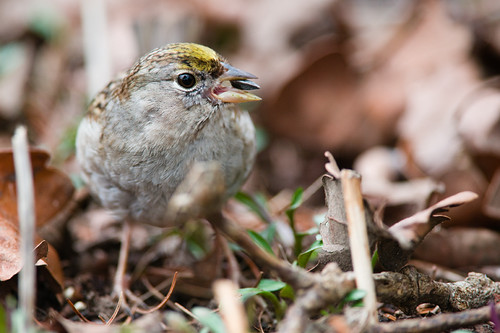 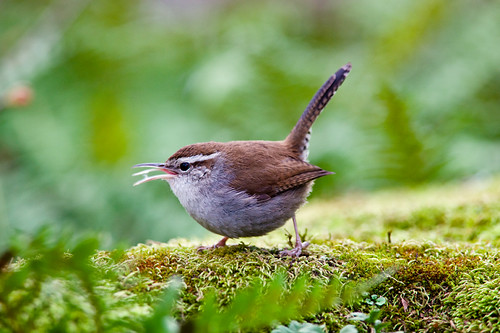
|
|
|
|
Rivers and ponds can be a great resource for water fowl. Though this first one was in an amusement park.  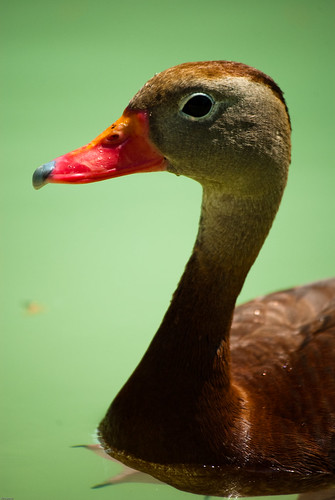 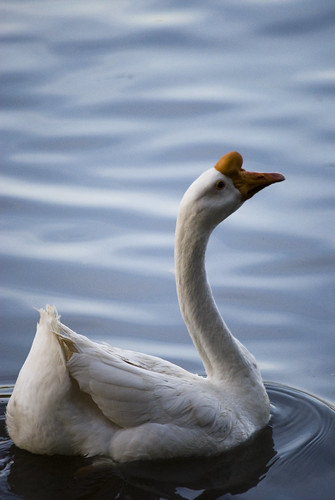 
|
|
|
|
There's not one of these that wouldn't look like poo poo printed, but I guess they're ok for web. Even when I'm close and they're dead-still I can't get anything sharp, it's just too dark by the time these guys come out. A girl at work is buying the 100-400 f/4.5-5.6 and says she'll let me borrow it; I'm anxious to see if I can get anything better with it. The fact that they even make a 400 f/2.8 makes me drool a little bit; jesus, the fun I would have with that plus a 1.4x extender.  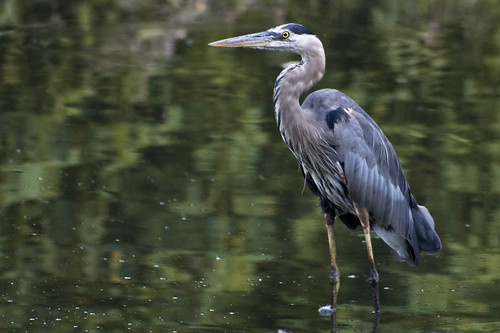 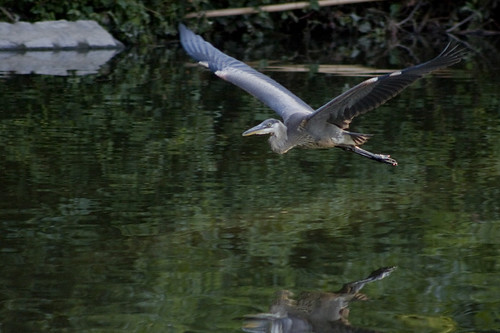 Mostly I'm finding that bird photography is all about the heartbreaking and hilarious missed-it-by-that-much poo poo like this:  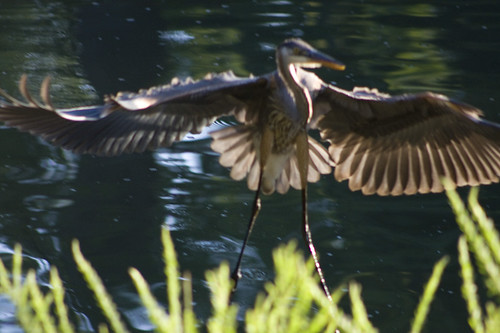
|
|
|
|
Kazy posted:Rivers and ponds can be a great resource for water fowl. I know this was a amusement park BUT, you need to get lower. Ideally you want to be eye level with the bird it makes the photo much more engaging to the viewer. When you are shoot down or up they end up looking like snap shots most of the time. I know this is not always possible but something you should keep in mind.
|
|
|
|
Dread Head posted:I know this was a amusement park BUT, you need to get lower. Ideally you want to be eye level with the bird it makes the photo much more engaging to the viewer. When you are shoot down or up they end up looking like snap shots most of the time. I know this is not always possible but something you should keep in mind. The amusement park one was eye level, the pond was elevated and the ducks were The last one was at a bird sanctuary in Port Aransas, was pretty much a marsh with an elevated walkway so it would've been impossible for me to go lower. 
|
|
|
|
Get down and give me 20 
|
|
|
|
Kazy posted:The amusement park one was eye level, the pond was elevated and the ducks were Depending on how high the walkway is and if you have a tripod you can put the tripod off the edge. I do this at a local place I shoot at. There is a floating walkway and I put my tripod in water and lay on the boardwalk with the camera on the tripod in the water.
|
|
|
|
jackpot posted:Mostly I'm finding that bird photography is all about the heartbreaking and hilarious missed-it-by-that-much poo poo like this: this exactly.  Click here for the full 968x827 image.  Click here for the full 928x825 image.  Click here for the full 952x791 image.
|
|
|
|
Munchee posted:this exactly.
|
|
|
|
jackpot posted:From the way these are overexposed and blurry, I'd almost bet money that you were on aperture priority and the camera decided to slow things way down to catch the waning light. I used to use Av all the time, now I hardly trust it at all, it's cost me too many good photos. I had the same problem I have been shooting in manual for a year or two and have not looked back. Once you get the hang of it, you have much much better control and depending on your camera is not much slower.
|
|
|
|
jackpot posted:From the way these are overexposed and blurry, I'd almost bet money that you were on aperture priority and the camera decided to slow things way down to catch the waning light. I used to use Av all the time, now I hardly trust it at all, it's cost me too many good photos. actually, I moved to take these from a bridge and I (woefully) forgot to account for the beautiful evening sun streaming under it. talk about sadness when I uploaded those ones..
|
|
|
|
I've been messing around with wildlife photography over the last while, which around here ends up being bird photography because there isn't much else to see. Gear needs some improving, using a 70-210mm F4 minolta "beercan" and a 400mm F5.6 Sigma that you have to manual everything because the chip isn't compatible with my Sony alpha. Some good pointers in this thread, I'm just getting into shooting from my sea kayak so I'll try to share some info on that once I get a bit more experience. Here are a couple bird shots from this winter/spring:  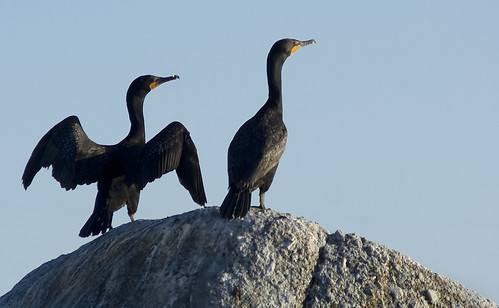  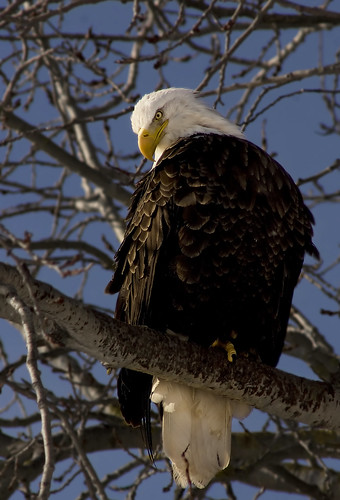
whaam fucked around with this message at 15:22 on Jul 18, 2009 |
|
|
|
Munchee posted:this exactly. Or suddenly 400mm becomes too long...  Some fuckups can be salvaged though, this one was 2EV underexposed at ISO 800 which usually means doom, but a b/w conversion helped hide some of the deficiencies.  Overall, as I said in the OP, I prefer manual mode. It doesn't take a lot of work to find some "reference metering subjects" to use, e.g. the beach sand here + 1/3 is just about perfect for a slightly-to-the-right exposure without blowing out the highlights on white birds. Go meter some grass/sand/whatever and figure out what compensation from that you need to apply to get things right and you're up and running.
|
|
|
|
jhoc posted:I've been messing around with wildlife photography over the last while, which around here ends up being bird photography because there isn't much else to see. Gear needs some improving, using a 70-210mm F4 minolta "beercan" and a 400mm F5.6 Sigma that you have to manual everything because the chip isn't compatible with my Sony alpha. Beautiful shots. Are those double-crested Cormorants?
|
|
|
|
^ as far as I know yeah. They are extremely common here, almost more of them around than seagulls, pretty bird though. We get an absolute ton of small birds in our backyard, especially goldfinches. Going to pickup some seed tomorrow I think and try to shoot them.
|
|
|
|
jhoc posted:^ as far as I know yeah. They are extremely common here, almost more of them around than seagulls, pretty bird though. We get an absolute ton of small birds in our backyard, especially goldfinches. Going to pickup some seed tomorrow I think and try to shoot them. Share your shots and how you got 'em when you do.  We don't get many Cormorants here, but tons of Anhingas. This one's a female... 
|
|
|
|
Clayton Bigsby posted:Share your shots and how you got 'em when you do. Wow that is the most human looking bird I have ever seen.
|
|
|
|
It aint exciting, but at least it's sharp: Caught a blue heron while using my 100mm macro.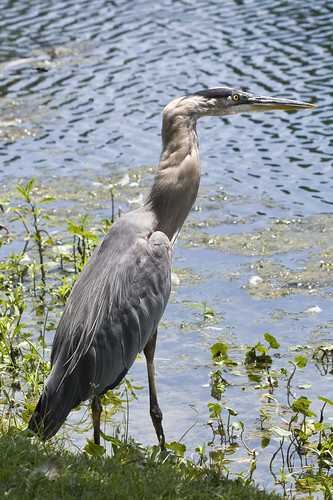
|
|
|
|
jackpot posted:It aint exciting, but at least it's sharp: Caught a blue heron while using my 100mm macro. Herons are wonderful, aren't they? Sorry for semi-abandoning the thread after starting it; the past week or so has been extremely hectic and I can just now sit down and relax a bit. I am working on further information but it's been slow going. Feel free to post some advice, questions, anything that comes to mind -- we're all learning and sharing! For now, have a pelican.  
|
|
|
|
 I got this loving around with a camera on campus one day. I'm sure it's not that great and I can't manage to get my scanner to actually scan the negatives right.
|
|
|
|
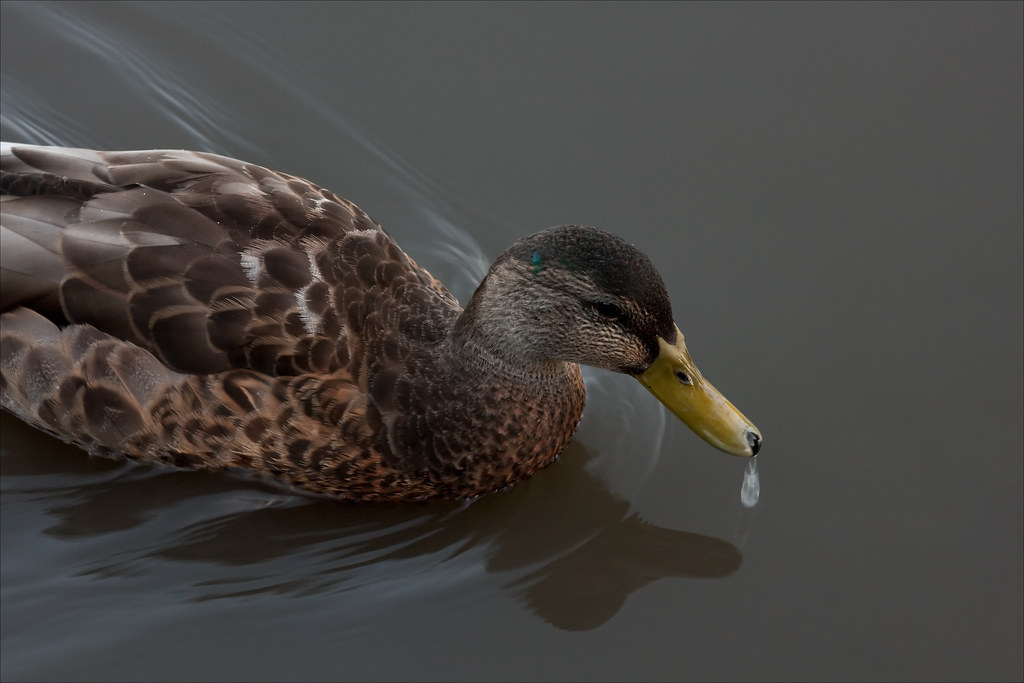  All I've gotten recently. I'm going on a hike this weekend which will hopefully be more fruitful.
|
|
|
|
If you have duck nests nearby, newly hatched ducklings are fearless. You can pet them once they get used to you. (Which takes about three minutes if you have a bag of old bread with you to bribe them with.) Momma and Papa duck usually don't mind you being close if you have bread. The trick is to get on their level. Everyone's seen pictures of ducks taken from a riverbank, so lie down in the grass and get up close.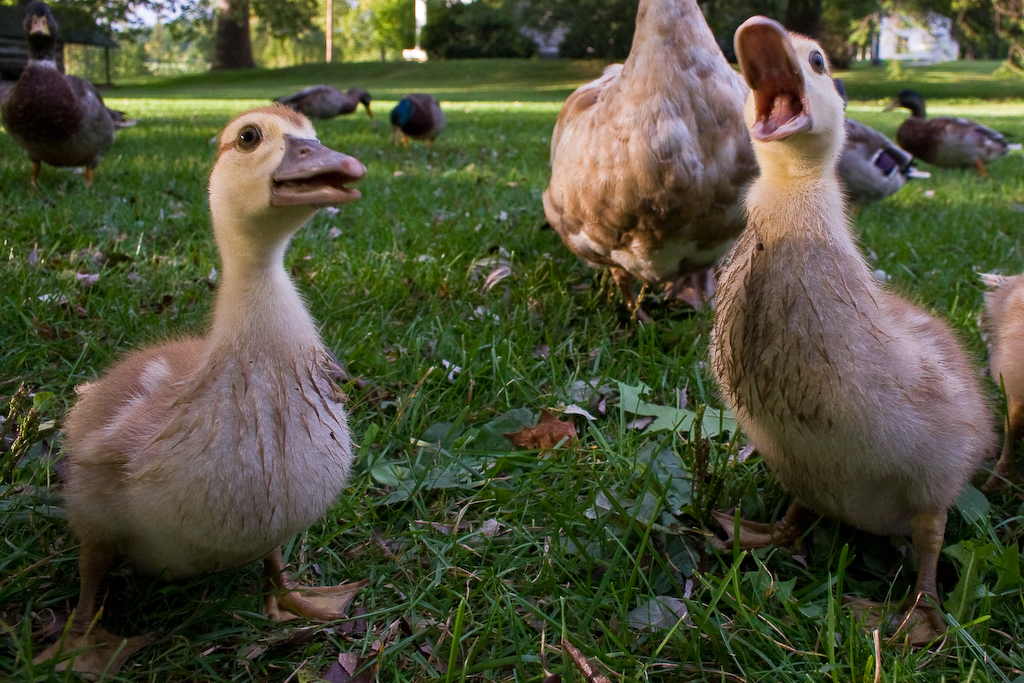  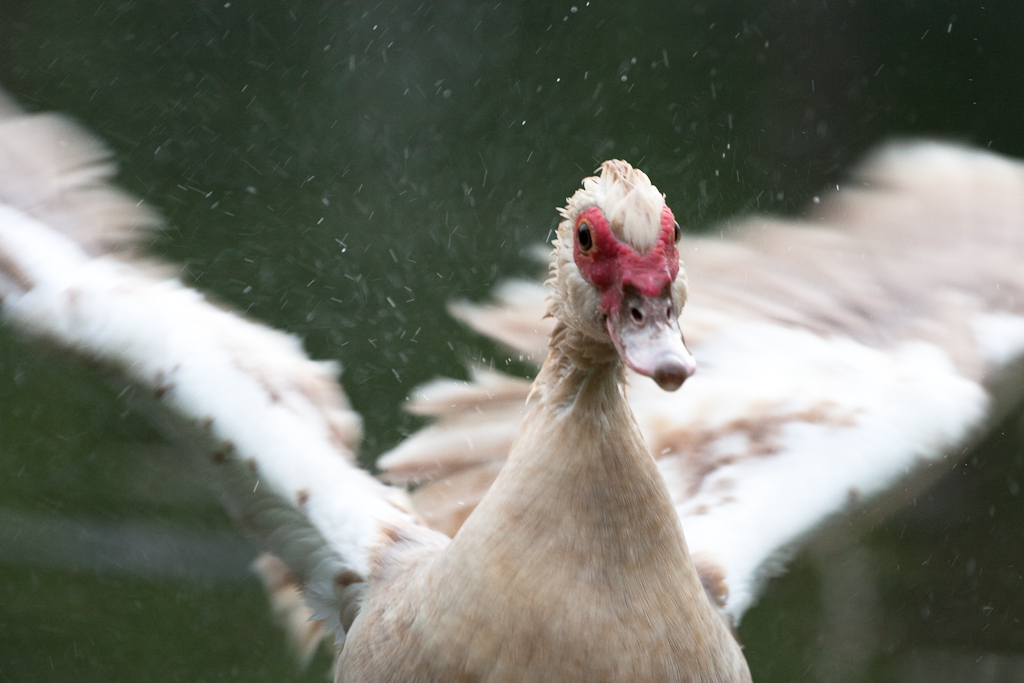
|
|
|
|
Clayton Bigsby posted:Herons are wonderful, aren't they? Yeah I was hoping to have lots to contribute this week but the weather has been terrible here. Looks like sun for the tail end of the weekend and I'm planning a full day out on the water looking for wildlife. I geared up an old tripod for use in the kayak and added a large strap so I can anchor the whole assembly between my back and the seat while shooting. Won't save my gear if I tip but at least will save it from falling in. Will take some shots of the rig before I go out and post them.
|
|
|
|
Jadeilyn posted:
The second shot looks really good.  (Wood duck, I'm guessing.) (Wood duck, I'm guessing.)Frinkahedron sort of touched on it, but try to get closer to the birds' level when shooting. Just like when you shoot kids, you want to avoid the "looking down" thing. Sometimes it's just not possible, but when it is, crawling in the grass/mud/whatever can pay off. Clayton Bigsby fucked around with this message at 18:33 on Jul 24, 2009 |
|
|
|
Frinkahedron posted:If you have duck nests nearby, newly hatched ducklings are fearless. You can pet them once they get used to you. (Which takes about three minutes if you have a bag of old bread with you to bribe them with.) Momma and Papa duck usually don't mind you being close if you have bread. The trick is to get on their level. Everyone's seen pictures of ducks taken from a riverbank, so lie down in the grass and get up close. These are just awesome. Goes to show that you don't always need long glass for birding! 
|
|
|
|
This was a quick shot before I went to work. Dumb me had it on ISO100 with too slow of a shutter speed. This was with a Canon 70-200 2.8L with Tamron 2x teleconverter, cropped. 
|
|
|
|
This is an awesome thread. Thanks for making it Clayton! I'm a big fan of your work, and you regularly get stunning results. I picked up a Sigma 135-400 from KEH for $170 a few months ago to take the edge off saving up for a 100-400L (which is looking more like a Christmas present to myself) and it's pretty good but you need to have a lot of light (it's sharpest at 11-16) but it's nice to have the reach. Just a couple backyard birds here: 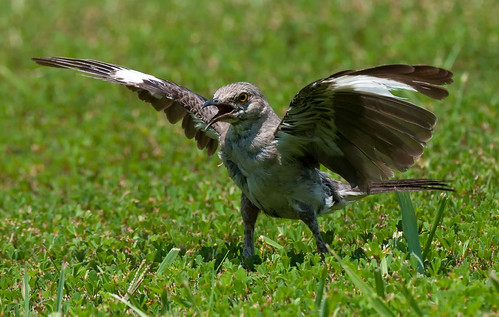 Highly annoying yet strangely endearing to me, there's a ton of Northern Mockingbirds that nest in the trees in my backyard and they've gotten pretty used to me and the camera. This one gets quite close. 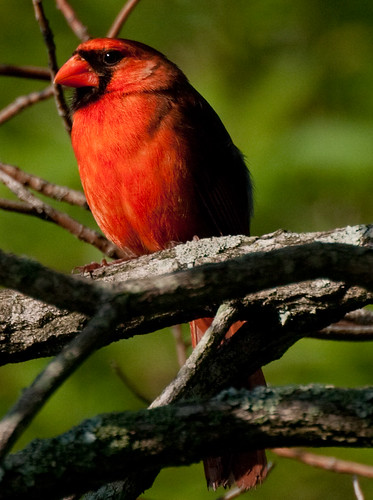 Cardinals are just awesome. That's all there is to it.
|
|
|
|
Loving the pose in the first shot.  The 100-400L is no doubt the best general purpose wildlife/birding lens that's reasonably affordable thanks to the zoom and the IS. The 400/5.6 which I have is more of a dedicated birds-in-flight shooter and sometimes I do miss having IS which would come in handy when the light is less than ideal and the subject mostly static. Ideally, I'd have both, but... The 100-400L is no doubt the best general purpose wildlife/birding lens that's reasonably affordable thanks to the zoom and the IS. The 400/5.6 which I have is more of a dedicated birds-in-flight shooter and sometimes I do miss having IS which would come in handy when the light is less than ideal and the subject mostly static. Ideally, I'd have both, but...
|
|
|
|
Hello, hello, hello, hello, hello  For some reason I always have "Highway to the danger zone" playing in my head whenever I see the terns swooping down and doing their thing... 
|
|
|
|
these are no where near on par with they shots you guys have shown but they are some of the better ones i got while on vacation (my first real venture into bird photography) both shot with my 5d mark II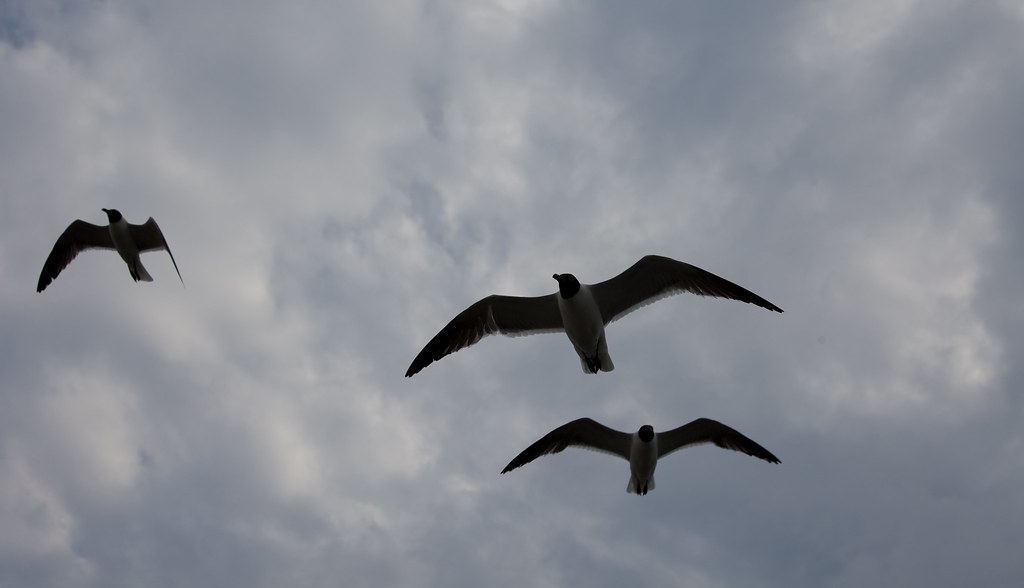 iso 100, 70mm, f/8.0, 1/500 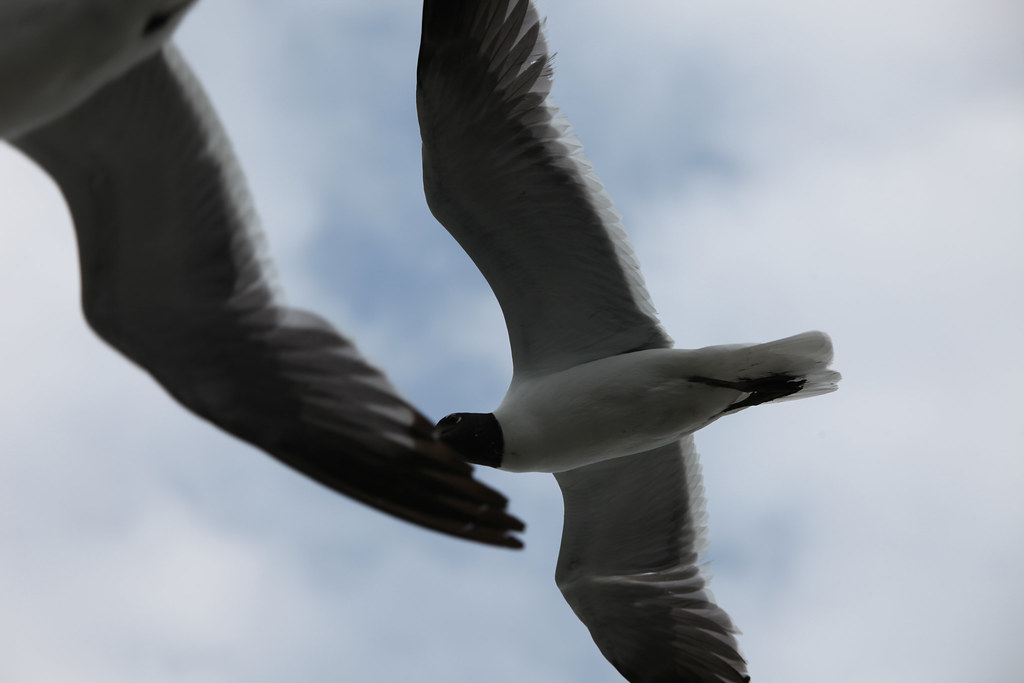 iso 100, 140mm, f/8.0, 1/250
|
|
|
|
This is really fantastic.  Excuse the noise. Went out today and it was really foggy and I kept missing focus with my 400mm (manual only), so pretty much everything came back lovely. The new tripod rig worked well though. 
|
|
|
|
jhoc posted:This is really fantastic. Not afraid to dunk the camera rig? We have a kayak but I am not confident enough to take my camera gear on it (other than the 1Ds2+24-105 which can survive just about anything). Then again we take it in the ocean so the water's not always friendly.
|
|
|
|

|
| # ? Apr 25, 2024 08:27 |
|
I tried to get lower down when I shot the ducks today. It's not easy since the lagoon is built with walkways that extend over the water, but the angle is definitely better.
|
|
|







